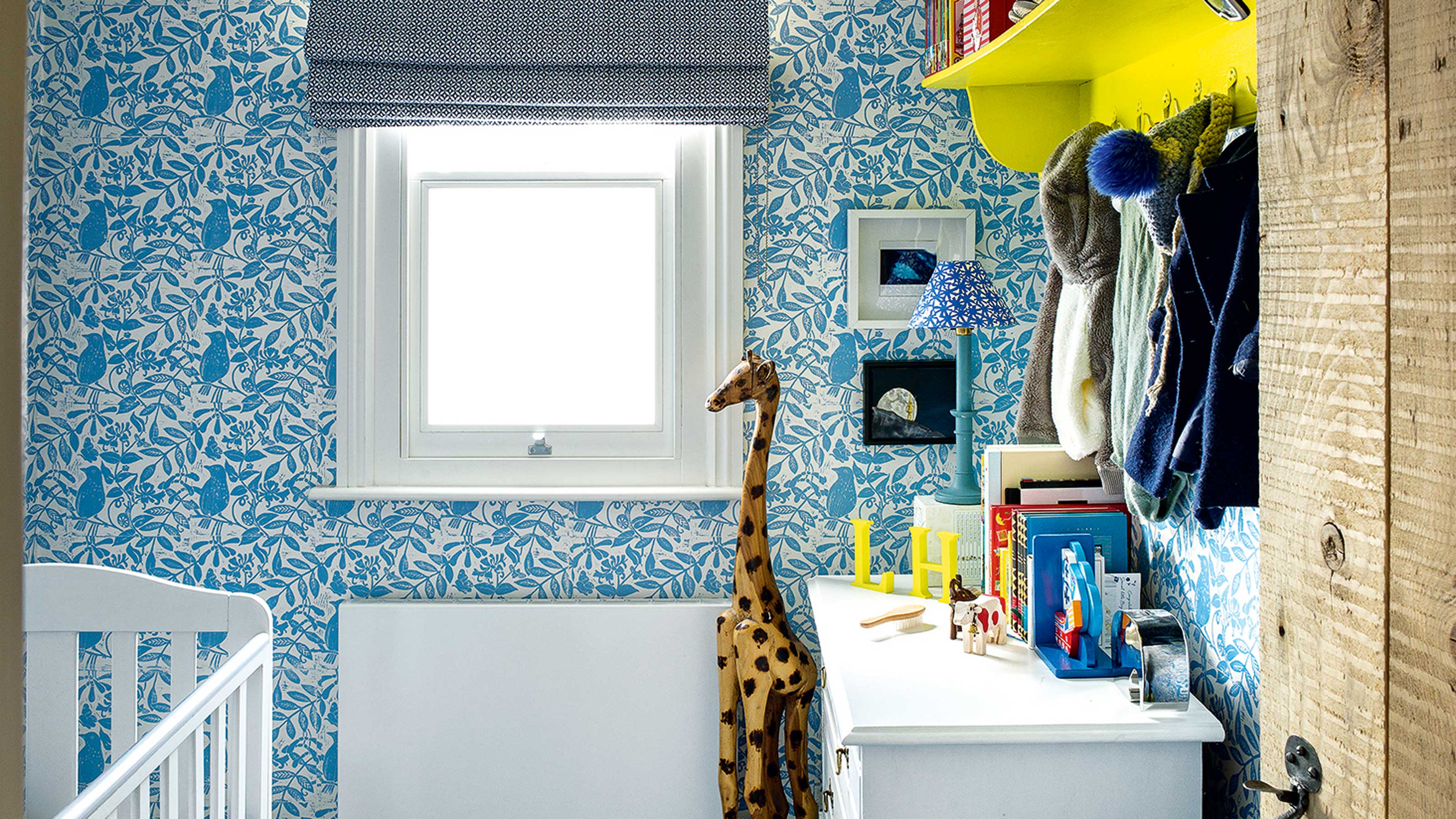
For someone so small, a new baby requires an awful lot of stuff. From diapers and clothing to blankets and burp cloths, you’ll need to employ sensible nursery storage ideas for everything, as well as ensure they’re easy to access, both day and night.
Getting your nursery ideas picture perfect may feel like the priority, but if it’s a well-organized nursery you’re after, functionality comes first – you can’t afford to overlook sensible storage. That’s not to say you sacrifice on style though; the two actually go hand in hand rather nicely, assuming you know what you’re doing.
That’s where we can help. Alongside advice from the experts on the most effective nursery storage ideas, we share top tips and lessons learned from our personal parenting experiences on how to get the most out of your nursery space.
Nursery storage ideas
There’s all manner of savvy bedroom storage hacks out there, but when choosing for a nursery, they need to make sense both now – and in the future. It may feel a long way off, but it really won’t be long before you’re organizing children's clothes and sorting toy storage ideas. Our favorite solutions are those that will grow and adapt over time, in line with your little one – they don’t stay babies forever, sadly!
1. Keep things open
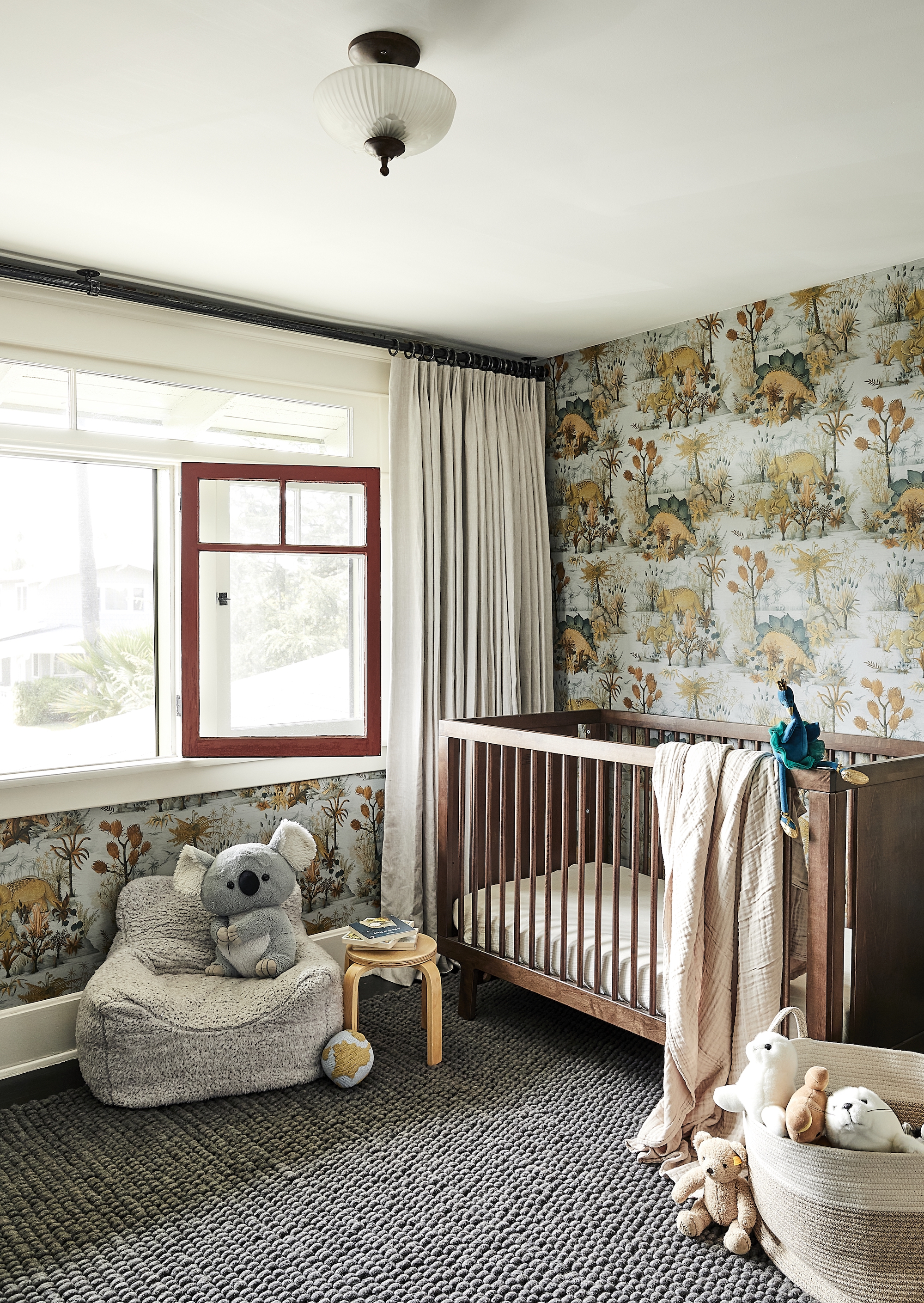
‘When it comes to nursery storage, accessibility is key, so try to avoid storage containers with lids if you can. Opt for open baskets or bins to hold small items like baby clothes, diapers, wipes and toys, so you can quickly grab them when you’re in need, then throw them back in afterward,’ says Oregon-based professional organizer Michelle Urban, founder of The Organized House.
If your baskets are on show, by all means opt for designs that match your nursery scheme, but bear in mind that a set of neutral baskets tend to have more longevity. You don’t want to have to update every time you redecorate. They’re also great for use in communal rooms, blending in beautifully with decor.
2. Leave room to grow
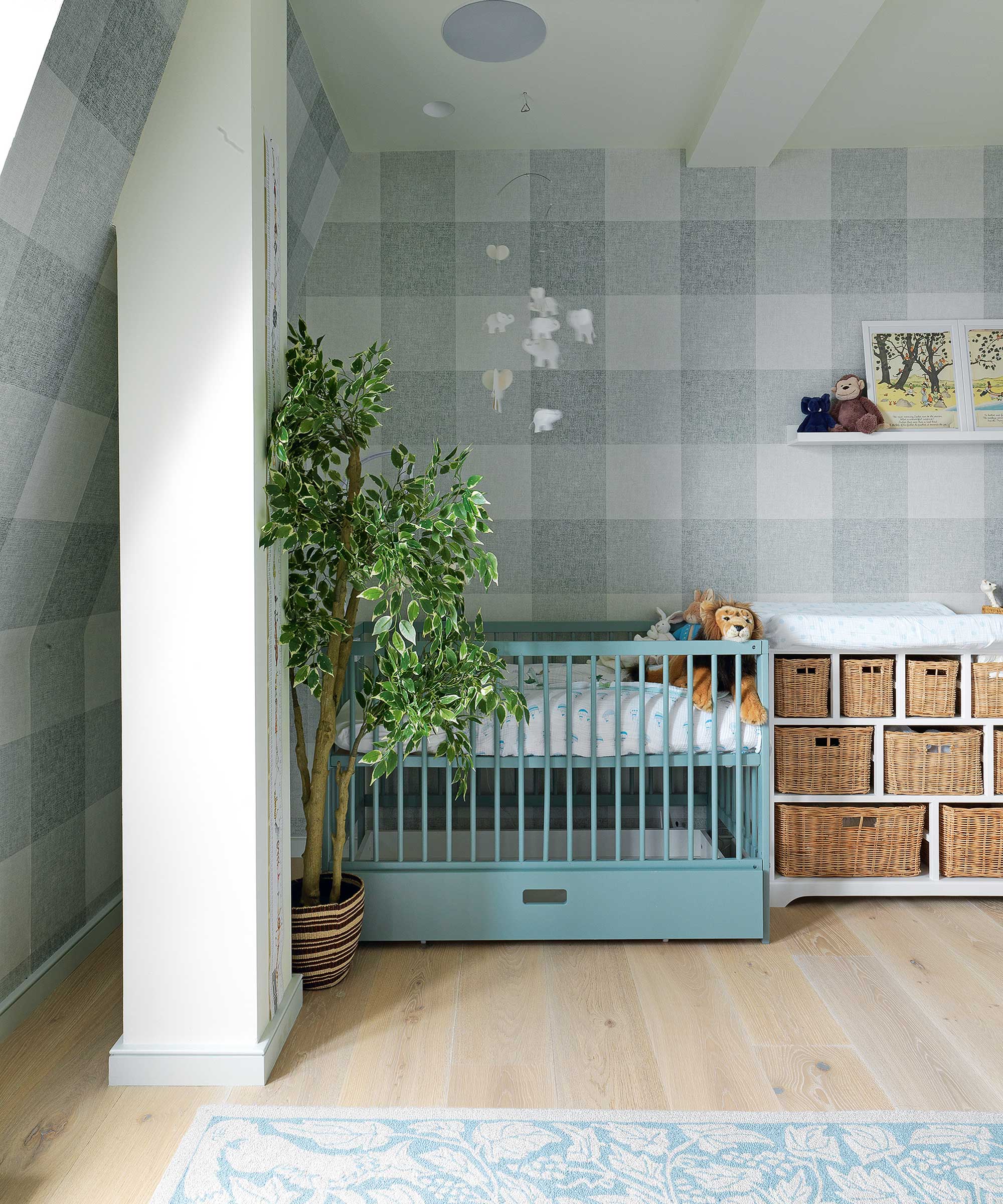
Despite what many manufacturers would have you believe, miniature furniture isn’t the most sustainable or cost-effective of choices in a nursery. It may look cute, but it won’t be long before your baby outgrows it, and you’ll be forced to overhaul with all-new children’s bedroom storage ideas which can be costly. Think ahead and opt for full-sized pieces, then customize if necessary.
‘Kids clothing, particularly baby sizes, won’t hang low in a regular-sized closet, so you can afford to add an additional clothing rod on a temporary basis, which can literally double your hanging space. You’ll likely still be left with space at the bottom, so make the most of it by positioning stackable storage containers or a laundry basket there’, says New York-based professional organizer Amanda Wiss, founder of Urban Clarity.
These same customization techniques can also be carried out in a master closet, alongside your own (or a sibling’s) clothes – handy if you don’t have a designated nursery, or for when baby is still sleeping in your room.
For added safety, attach furniture securely to the wall and add child locks, at Amazon, to all cabinets and drawers.
3. Opt for cubby-style storage units
Cubby-style storage units are particularly useful as they can so easily be adapted as your child’s needs change – something to bear in mind when looking for playroom storage ideas, too. When it comes to the cubes themselves, Rachel Timmerman, founder of the lifestyle blog, Analytical Mommy, recommends opting for soft-side designs.
‘You can pull these out and leave them on the floor without the risk of baby rolling and catching an edge or a sharp corner', she explains. You can always change for something more sturdy in the future if you feel you want to.
Group items by category into the baskets (diaper changing, feeding, playing and so on) and move them around the house as you need them to save yourself going back and forth to the nursery every five minutes.
4. Divide and conquer
Drawer dividers are perfect for keeping teeny tiny baby clothes in check when organizing a dresser. Choose adjustable dividers, such as these at Target, so you can move them around as your child – and their clothing – gets bigger.
‘Using drawer dividers alongside the file folding (or rolling) technique, where you position items upright as opposed to stacking them, allows for maximum storage without overcrowding – if those drawers still won't shut, you know it’s time to cut back,' says Michelle.
5. Utilize space under the crib
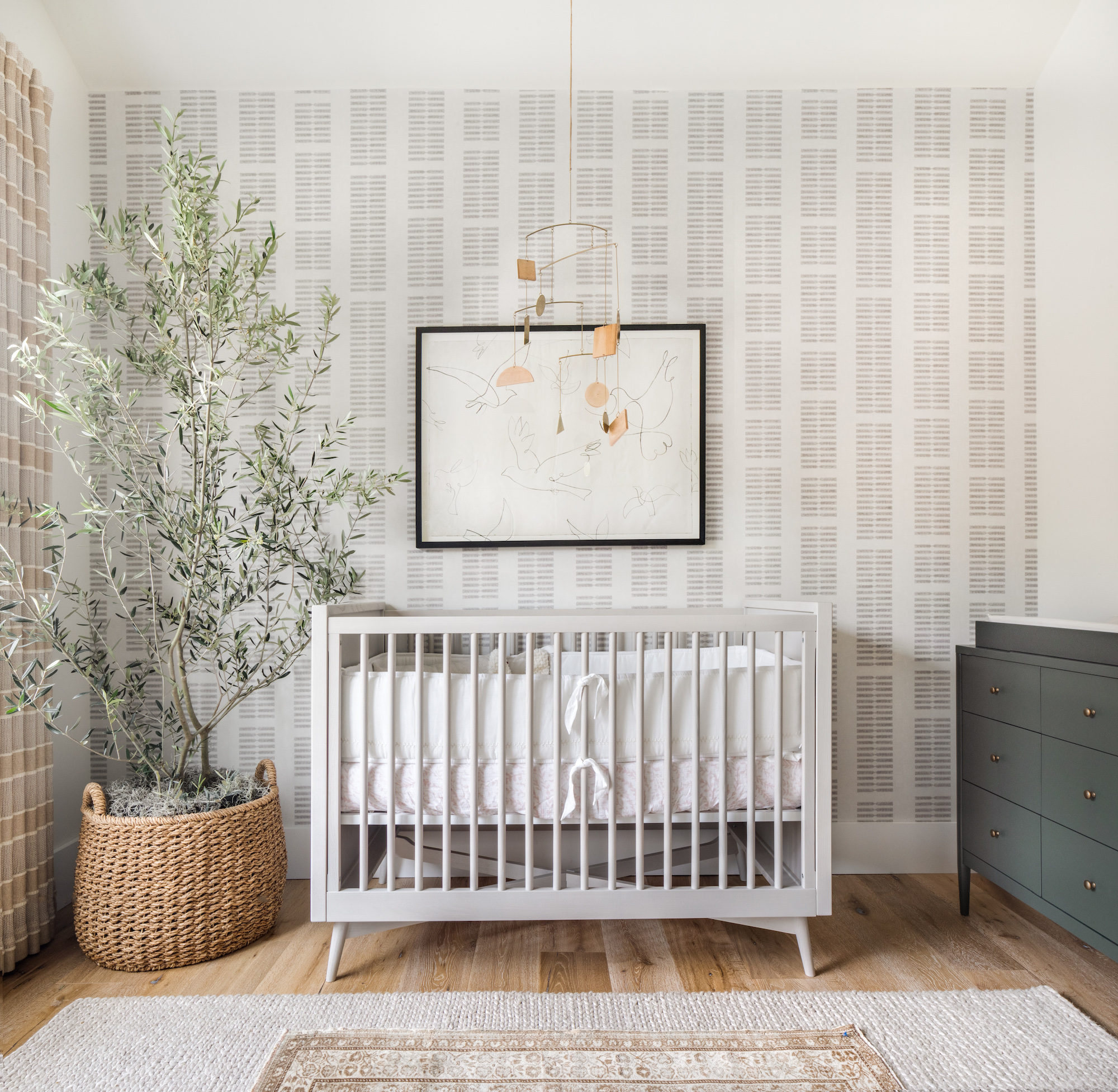
Given how quickly they move through sizes, storing and organizing baby clothes can be tricky at the best of times, let alone without a closet or dresser to fill. But it’s certainly not impossible. The trick is to turn your attention to less obvious storage spaces – under the crib, for example.
‘This is a great space for storage that most people just don’t think about,' says Amanda. ‘Invest in an underbed bin (ideally with wheels, such as this one at Target) to store clothing, bedding, towels and blankets, or anything surplus, such as diapers and wipes’.
6. Be flexible on furniture
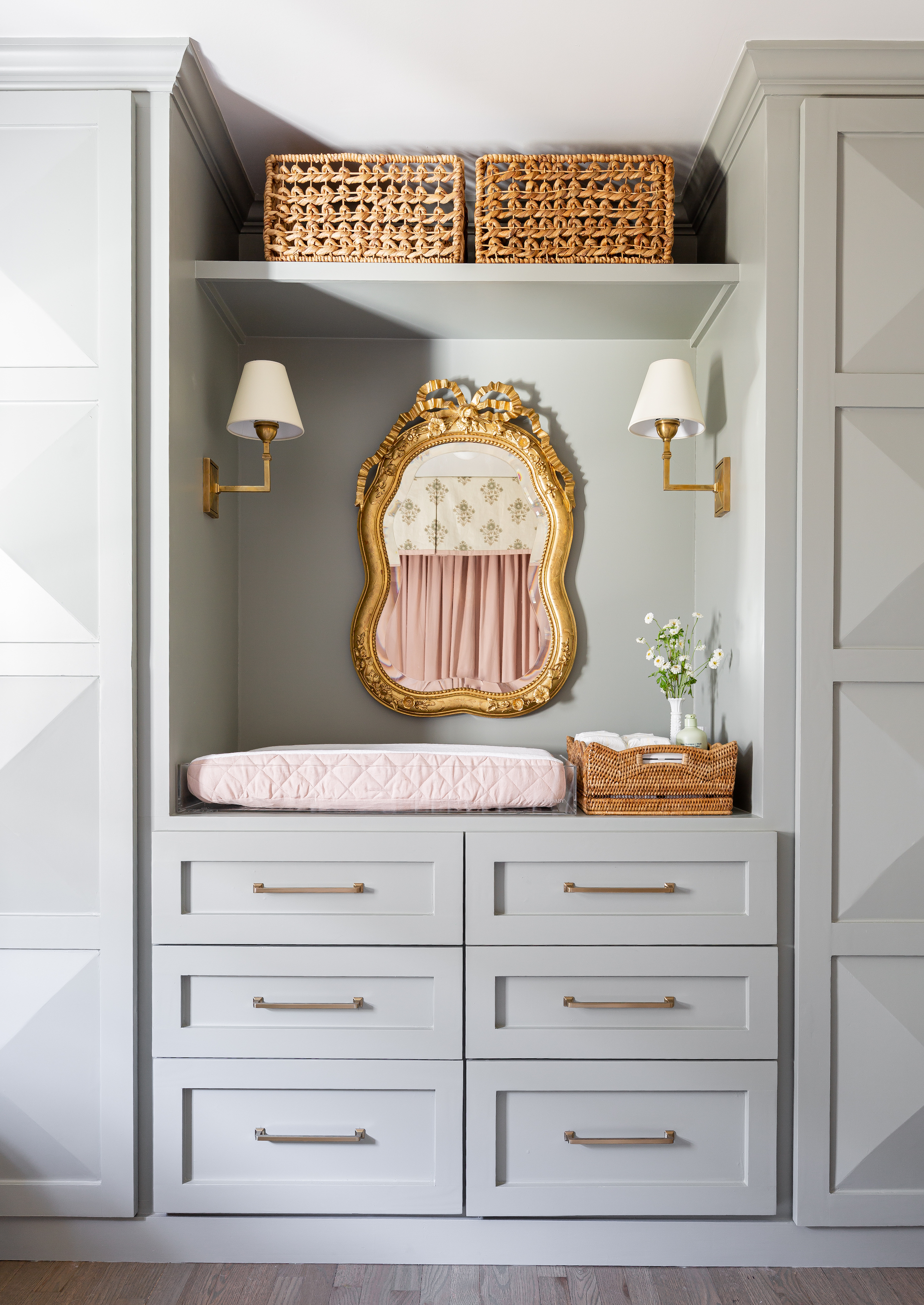
If you’re combining your nursery with another part of the home, flexible furnishings are essential if you want it to remain neat, tidy and well-organized. Where possible, choose dual-purpose pieces, ideally with storage built-in: an upholstered bench that doubles up as a toy chest, or a dresser that transforms into a changing table.
If you’re still running short on space, experts advise investing in a rolling cart that can be wheeled into a closet or another room when not in use.
‘As an infant, this can be used as a mobile changing station to hold all the essentials (but not a changing pad and the baby!) such as diapers, wipes and changes of clothing. As your baby becomes a toddler and well into their school years, it can be serve as a library, an art caddy, or even a homework cart,' says New Hampshire-based Lauren Saltman, founder of Living. Simplified.
7. Make use of wall space
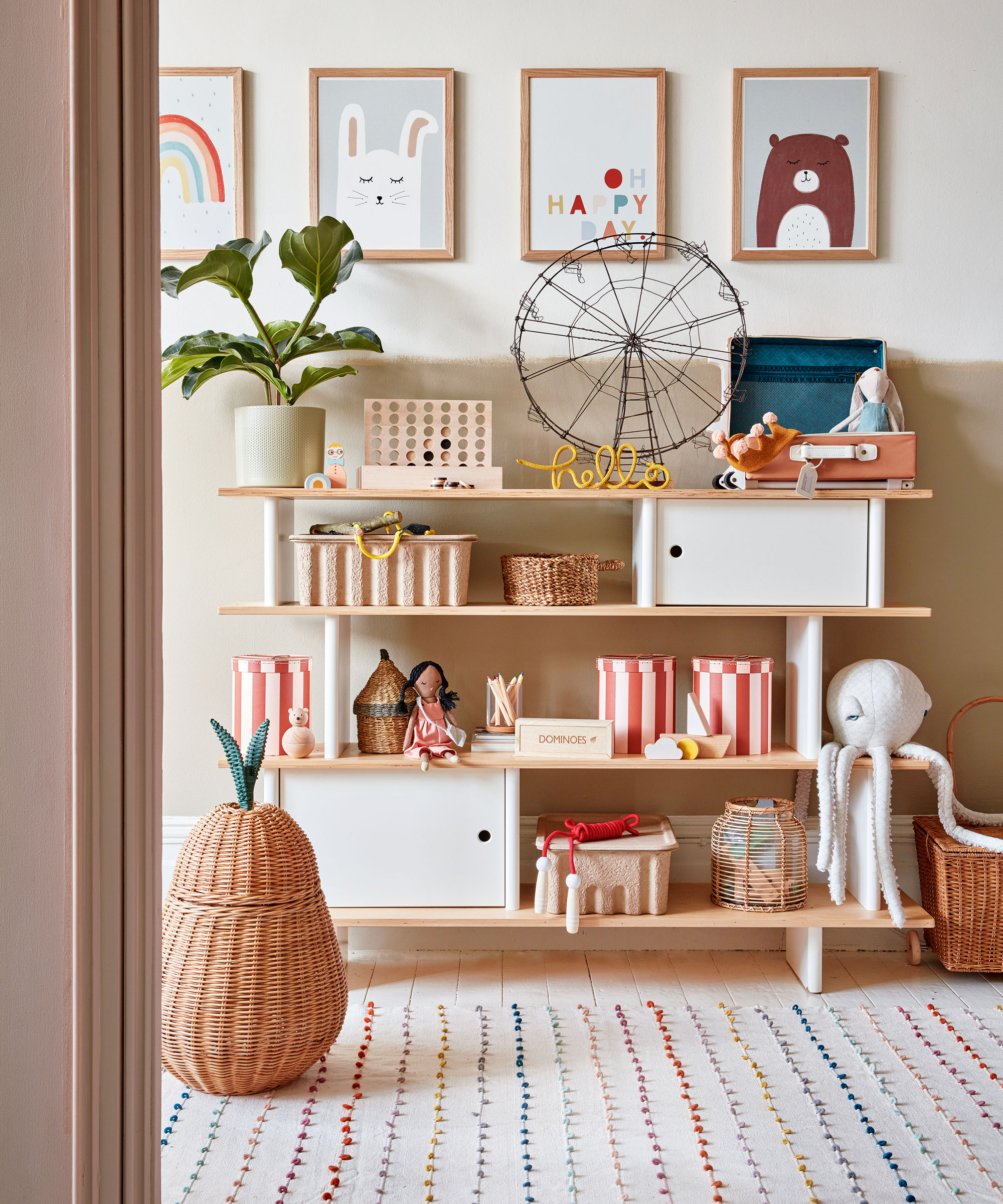
While we’re all for cute wallpaper and pastel paint shades, nursery walls can work a whole lot harder, contributing to storage whilst still remaining stylish. Open shelving, picture rails and pretty hooks not only look visually appealing, but allows you easy access to essentials too.
‘Adding front-facing bookshelves to your playroom can look tidier than traditional bookcases and be much easier for kids to use – as long as they’re the appropriate height’, says Laura Rich, product developer at Furniturebox.
The same can be said for cute outfits and stylish toys. You could even mount a pegboard on the wall complete with hanging baskets for hiding smaller, less sightly items. However you do it, keeping items up off the floor like this also creates more floor space for your baby to grow, crawl and explore the room safely, so it’s well worth factoring into your storage plan.
8. Label everything
Regardless of what categorizing and storage system you use in your nursery, be sure to label everything, whether it’s with stickers, chalkboard tags, or even just a marker. ‘As well as reminding you what’s where, doing this also means friends and relatives can help out without having to ask – you’ll be glad of that when you’re in need of a nap yourself, says Amanda.'
9. Dedicate space for future clothes
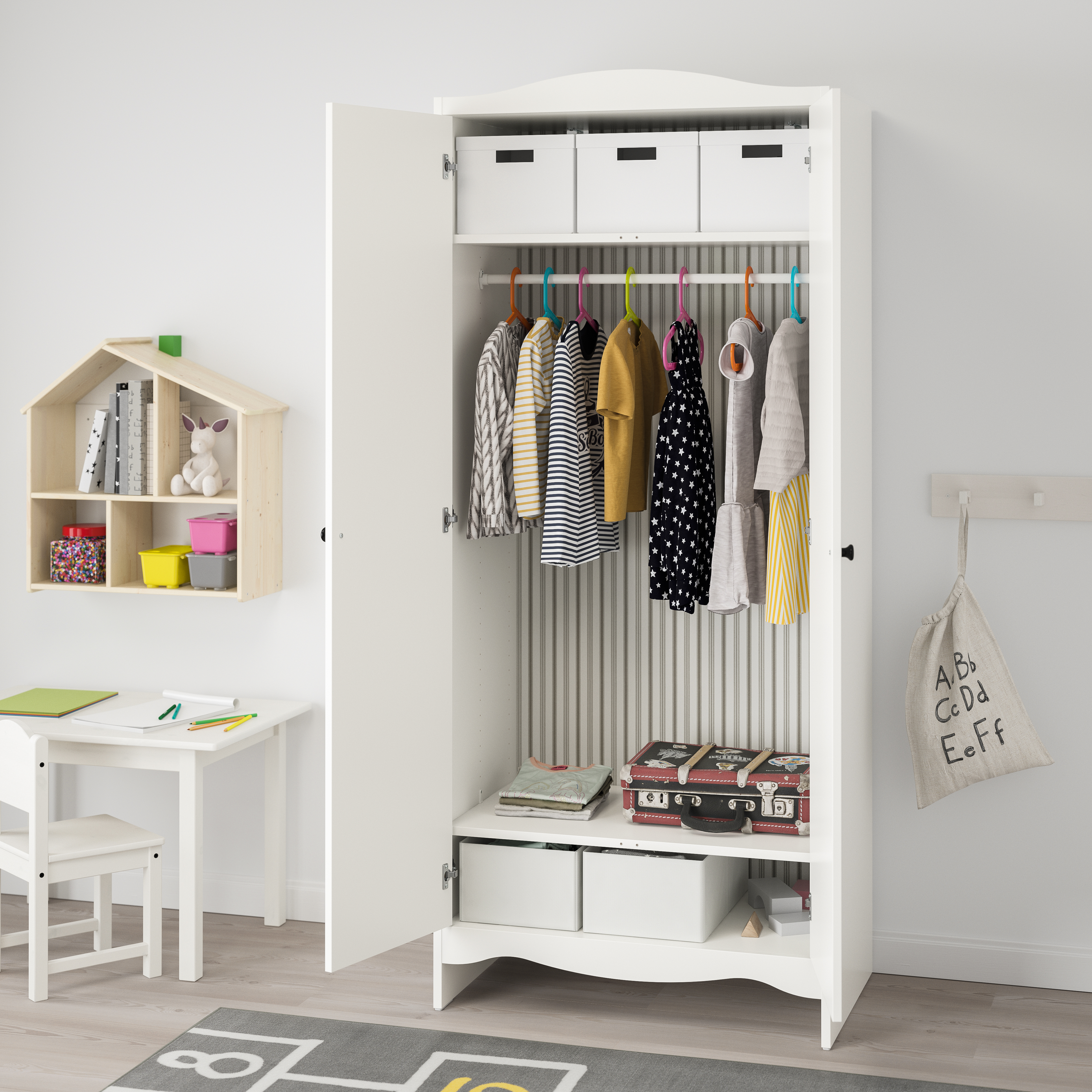
Whether they’re hand-me-downs, gifts or you’re simply well-prepared, you’re likely to have an overflow of clothing and toys for the future. While these don’t require prime storage space, you’ll be amazed at how quickly you’ll need them, so choose somewhere close by, ideally in the nursery itself, the top of the closet or under the bed, for example. vacuum storage bags such as these at Amazon, can be compressed right down, which is a great space saver.
FAQs
What kind of storage do I need in a nursery?
When it comes to organizing a nursery, the main aim is to avoid clutter at all costs; there’s really no such thing as too much storage. Start by thinking of ways you can integrate more storage into existing furniture (stackable containers and hanging rods into closets, drawer dividers into dressers etc.) or perhaps invest in pieces fit-for-purpose; cribs and changing tables with built-in drawers, for example.
Where possible, open storage is your best bet. Lidless baskets and bins allow for easy access, and can be moved around the house as and when you need. Bear in mind that certain items will need to be kept out of reach as baby grows; medicines and age-specific toys, for example.
Don’t overlook vertical space either. Open shelving, picture ledges and hanging hooks all make for easy access, and if styled with thought, can look rather lovely, too.
With endless feeds and sleepless nights to contend with, it’s no surprise that tidiness isn’t top of the agenda for the majority of new parents. However, taking the time to stow things properly can save you time and energy, not to mention unnecessary stress. Rummaging through clutter in search of misplaced items is frustrating at the best of times, let alone at 3am with an unsettled baby for company – take it from us!







